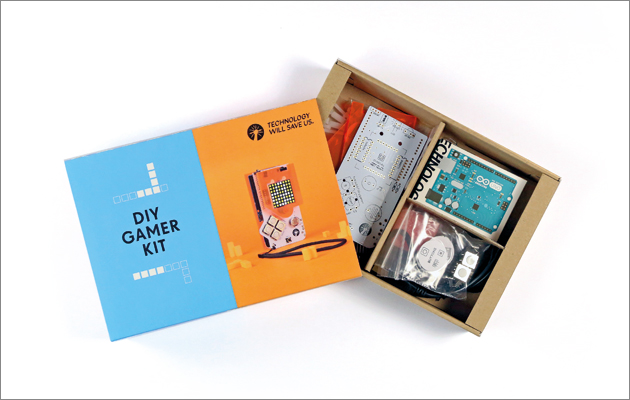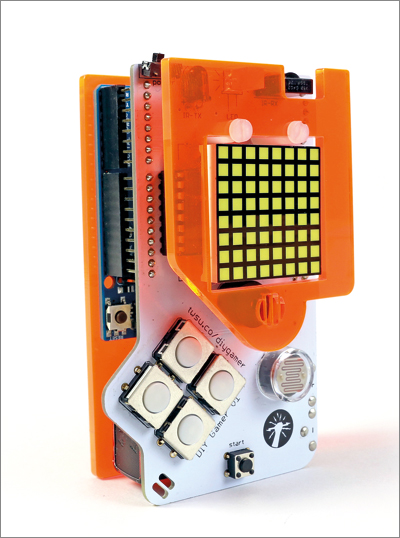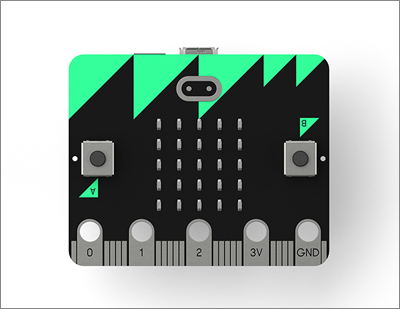|
|
||
|
Dismayed by our incomprehension of how consumer electronics work, Technology Will Save Us are determined to re-educate the nation “Our mission is to build the most accessible system for hands-on learning in the world,” says Daniel Hirschmann, artist, technologist and co-founder of Technology Will Save Us. His ambition is understandable – the tech start-up he founded with designer Bethany Koby has in recent months been propelled to the upper echelons of the design world, after its DIY Gamer Kit was nominated for Design of the Year by the Design Museum and acquired by New York’s Museum of Modern Art. The pair started in 2012, selling their kits from inside a record shop. Now, their 20-strong team is based in two premises on a street in east London – office-based functions in one location; assembly in the other. It all started when South Africa-born Hirschmann found a fully functional laptop in a bin. “I was horrified that someone would just throw it away,” he says. The incident sparked a conversation with Koby about our culture of disposability that he says is responsible for TWSU’s creation. “We’re surrounded by technology, yet we’re disconnected from it,” he summarises. “We think this is because people aren’t exposed to technology – they are just given hermetically sealed products that are replaced when they break. We wanted to expose people to what goes into making technology function, rather than just consuming it.”
The kit allows you to code your own games Their solution was to create gadgets that could be made by anyone at home, a process they hoped would demystify technology in a world where many are wary of even changing a fuse. The first comprised 15 components and a soldering kit. “You melted metal and ended up with a musical instrument, but it was so much more than the sum of its parts because you got the experience of making it, which gives people confidence to use these skills in the future.” Many workshops and research projects resulted in their current range – of which the DIY Gamer Kit has been the star act. Launched in 2013, this box of components allows you to build a handheld device on which to code games. “You’re introduced to programming, but you also have to think about design challenges such as what your game will look like and its narrative.” Instructions, as with all their kits, come in multiple forms, from YouTube videos to PDF and printed manuals that resemble those of old model aeroplane kits. It is not hard to see why the design establishment has taken notice of the enterprise. From the DIY Gamer to the Thirsty Plant kit – a solar-powered detector that tells you when to water your plant – the gadgets are visually as well as intellectually pleasing. Colourful yet refined, their deliberately gender-and age-neutral aesthetic gives them wide appeal. They have also tapped into the resurgence of interest in craft and a nostalgia for the handmade. Recognition from design institutions is important to the duo – not least due to the exposure it brings (MoMA put the DIY Gamer on the cover of its 2.5m circulation catalogue). “It’s validation that we’ve designed something eyecatching and exciting, that makes you want to learn more.”
The DIY Synth kit, on which you can generate music This is a crucial to their mission to reach “outside the geek community,” to people who might otherwise be intimidated by technology and fear voiding their warranties. “We want to talk to the people who are too afraid to fix their phone or remote control when it’s broken – to give them the choice to customise their world.” Both Hirschmann and Koby have experience in teaching – computing and social innovation, respectively – so they naturally sought ways to connect to potential users directly, through workshops and after-school clubs. With a new emphasis on coding in the school curriculum, it’s clearly something that’s seen as important.
The pocket-sized codeable BBC Micro Bit computer will include LEDs, programmable buttons, a motion detector, a compass, Bluetooth technology and input and output connections to hook up robots and motors to the device. It will be distributed to 1 million children across the UK in September Indeed, this year TWSU has embarked on its most high-profile project to date. As part of the BBC’s Make It Digital campaign, it will be working alongside Microsoft and Samsung to design a weareable, customisable coding device, the Micro Bit, that will be distributed to 1 million 11- to 12-year-olds across the UK this September. As interest in TWSU grows, the company is seeking investment to keep up. Hirschmann hopes it will mean they can expand their operations further afield. “As I’m from southern Africa, the idea of working there is close to my heart. In the developing world, things are repaired as a matter of course, rather than thrown away. There’s an interesting set of lessons we can develop with people in these regions and bring back here – and vice versa, taking what we’re doing here over there.” |
Words Debika Ray
Above: The DIY Gamer kit, which was aquired by New York’s MoMA |
|
|
||
|
All packaging is designed to be gender- and age-neutral |
||





















